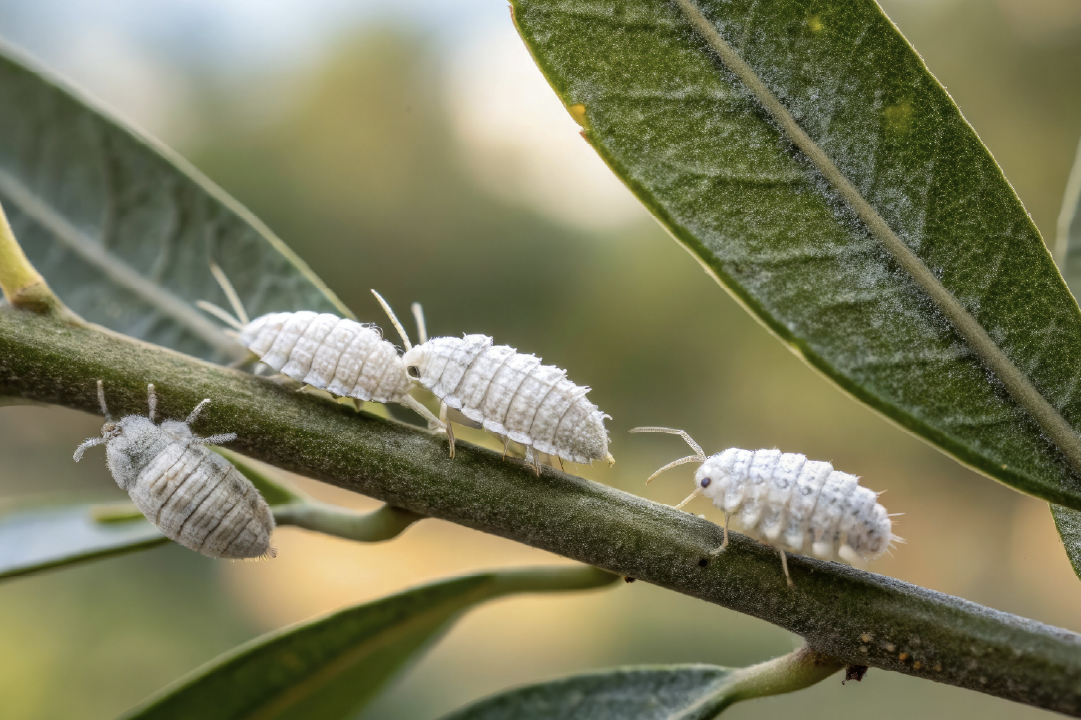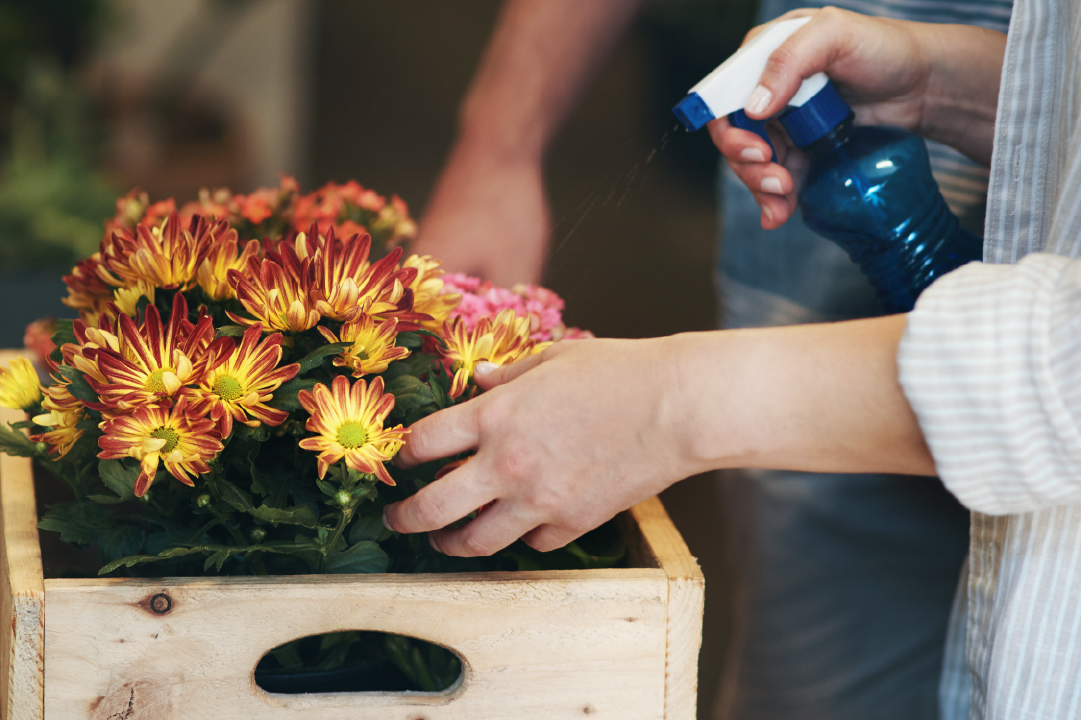.jpg)
Picture this: You’re admiring your lush indoor garden, but wait—what’s that cottony mess on your plant’s stem? Oh no, mealybugs! These sneaky little pests have set up camp, sucking the life out of your beloved greenery. But don’t panic just yet! This guide will take you through the most effective mealybug treatment for houseplants, from natural solutions to the best insecticide for mealybugs. Let’s reclaim your indoor jungle!
Meet the Mealybug: The Furry Little Sap-Suckers
Mealybugs are tiny, white, cotton-like pests that latch onto plants and drain their juices, causing stunted growth, leaf yellowing, and overall plant distress. If left unchecked, they can quickly spread from one plant to another, wreaking havoc on your entire indoor garden.
How to Spot a Mealybug Infestation
- White, fuzzy cotton-like clumps on leaves and stems
- Sticky honeydew residue attracts ants
- Yellowing or wilting leaves
- Distorted or stunted growth

How to Get Rid of Mealybugs: Step-by-Step Guide
1. Isolate the Infected Plant
First things first—quarantine the affected plant! Mealybugs spread fast, so keeping an infested plant away from others prevents an outbreak.
2. The Soap and Water Trick
A simple mixture of mild liquid soap and water can break down the mealybugs’ protective wax coating and help remove them.
3. Rubbing Alcohol: The Spot Treatment Hero
Dab a cotton swab in 70% isopropyl alcohol and apply it directly onto mealybugs to kill them instantly.
4. Natural Predators – A Bug vs. Bug Fight!
Introduce beneficial insects like ladybugs and lacewings to prey on mealybugs in outdoor settings. For indoor plants, opt for biological sprays containing Beauveria bassiana, a natural fungus that eliminates pests.
5. Neem Oil: The Natural Warrior
Neem oil disrupts the mealybugs’ life cycle while being safe for plants. Spray a neem oil solution every few days until the infestation is gone.

Best Insecticide for Mealybugs: Your Ultimate Defense
If the infestation persists despite natural remedies, it’s time to bring out the big guns—chemical insecticides. But which one should you use?
1. Systemic Insecticides
Systemic insecticides work from within the plant, making the sap toxic to pests. Look for products containing imidacloprid for long-term control.
2. Horticultural Oils and Insecticidal Soaps
These suffocate mealybugs on contact while being less harmful to beneficial insects.
3. Pyrethrin-Based Insecticides
Derived from chrysanthemum flowers, pyrethrins are fast-acting and highly effective against mealybugs when sprayed directly.

Preventing Future Mealybug Infestations
- Regular Inspection: Check your plants weekly, especially the undersides of leaves.
- Maintain Proper Humidity: Mealybugs thrive in warm, dry environments. Increase humidity with a pebble tray or humidifier.
- Keep Plants Clean: Wipe down leaves with a damp cloth to remove dust and hidden pests.
- Use Quality Potting Soil: Infested soil can introduce mealybugs to new plants. Opt for sterile, high-quality soil.
DeHaat Bageecha Health 360: Your All-in-One Plant Protector
If you're tired of battling mealybugs and other pesky plant invaders, DeHaat Bageecha Health 360 has got you covered!
Why Choose DeHaat Bageecha Health 360?
- 100% Natural Formula – Safe for plants, pets, and the environment
- Multi-Purpose Action – Controls mealybugs, aphids, and other common pests
- Easy Application – Just spray and watch your plants thrive!
- Boosts Plant Immunity – Helps plants resist future pest attacks
Don’t let mealybugs take over your indoor oasis. Grab DeHaat Bageecha Health 360 today and keep your plants healthy, happy, and mealybug-free!
Mealybugs may be persistent, but with the right strategy and the best insecticide for mealybugs, you can win the battle and enjoy a pest-free indoor jungle. Let your plants breathe easy again!
FAQs
Q1: Are mealybugs harmful to humans?
No, mealybugs don’t bite or harm humans, but they can weaken your plants and attract ants, which can be a nuisance indoors.
Q2: How often should I apply insecticides for mealybugs?
Follow label instructions, but generally, systemic insecticides should be applied every few weeks, while contact sprays may require more frequent application.
Q3: What plants are most susceptible to mealybugs?
Common victims include succulents, orchids, ferns, hibiscus, ficus, and pothos plants. These soft-stemmed plants attract mealybugs due to their rich sap.
Q4: Can I use vinegar to kill mealybugs?
While vinegar is acidic, it may damage plants. Stick to rubbing alcohol or insecticidal soap for safer results.
Q5: Do mealybugs come back after treatment?
They can, but regular plant care and preventive measures will reduce the chances of reinfestation. Keeping your plants healthy is key to long-term pest management.
Q6: What is the best natural remedy for mealybugs?
Neem oil is one of the best natural solutions, disrupting the pests’ life cycle without harming plants or beneficial insects.
Q7: Will dish soap kill mealybugs?
Yes! Mixing mild dish soap with water and spraying it directly on infested plants helps break down the mealybugs’ protective waxy coating, making them easier to remove.
Q8: How can I prevent mealybugs when bringing in new plants?
Always quarantine new plants for a couple of weeks and inspect them thoroughly before placing them near your other indoor plants. Washing leaves and repotting in fresh soil can also reduce the risk of infestation.
Q9: What is the role of ants in mealybug infestations?
Ants protect mealybugs because they feed on the honeydew that mealybugs secrete. Controlling ants can help reduce mealybug populations in your home garden.
Q10: Can baking soda kill mealybugs?
Baking soda is not effective against mealybugs. Stick to proven methods like neem oil, insecticidal soap, or systemic insecticides.



